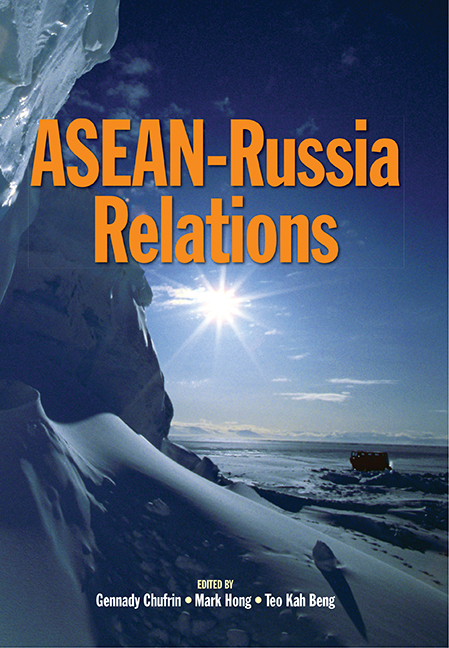Book contents
2 - Russian Perspectives on ASEAN
from Part I - Overview of ASEAN-Russia Relations
Published online by Cambridge University Press: 09 November 2017
Summary
As a Eurasian country Russia — similarly to the former Soviet Union — has strong national interests in Asia in general and in Southeast Asia in particular. They are formed not by mere geography but by a rich variety of political, economic, security, demographic, cultural and other factors. Obviously at different periods of the Soviet/Russian history some of these factors became more prominent than the others thus influencing the choice of national objectives and means of their achievement.
Reflecting fundamental geopolitical changes and new security challenges in the post-Cold War world, Russia's foreign policy in the post-Soviet period became fundamentally different from that of the Soviet times both in its goals and in methods of achieving them. The former great power's assertive goals were replaced with the need to create a favourable external environment for Russia's economic development. And while the Soviet Union's main instruments of pursuing its strategic goals were ideological and military, the new democratic Russia places emphasis on diplomatic and political methods in its foreign policy.
Shortly after Vladimir Putin was elected Russian President in 2000, a revised “National Security Concept” and a new “Foreign Policy Concept” were adopted by him. In both of these documents, economic issues were placed at the centre of the long-term national development strategy. The “Foreign Policy Concept” stated in particular that in order to ensure Russia's national security and to strengthen its sovereignty and territorial integrity, the Russian Government should concentrate on:
a) Creation of favourable external conditions for a progressive economic development of Russia and for a noticeable improvement in the living standards of its population;
b) Formation of a good-neighbourly belt along its national borders, assistance in resolution of existing and prevention of emergence of new tensions and conflicts in areas adjacent to the Russian Federation;
c) Search for common and complementary interests with foreign countries and international organizations while pursuing national priority goals; creation of a system of partnership and alliances on this basis that would facilitate international cooperation.
- Type
- Chapter
- Information
- ASEAN-Russia Relations , pp. 7 - 14Publisher: ISEAS–Yusof Ishak InstitutePrint publication year: 2006



